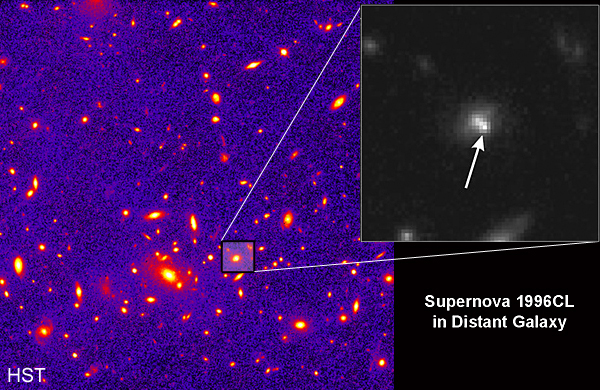

The Hubble telescope can clearly distinguish the supernova light from the glow of its parent galaxy. The larger image on the left shows the entire cluster of galaxies. The galaxy where the supernova was discovered is located in the boxed area. The bright knot of light from the supernova and the fainter glow from the parent galaxy are shown in the inset image on the right. The arrow points to the light from the supernova explosion. xx
Supernova 1996CL
is a Type Ia supernova. Exploding stars of this type are particularly useful
for cosmology because they share a standard maximum brightness. By measuring
this brightness, astronomers can determine a Type Ia's distance from Earth.
Astronomers use this information to measure the expansion rate of the universe.